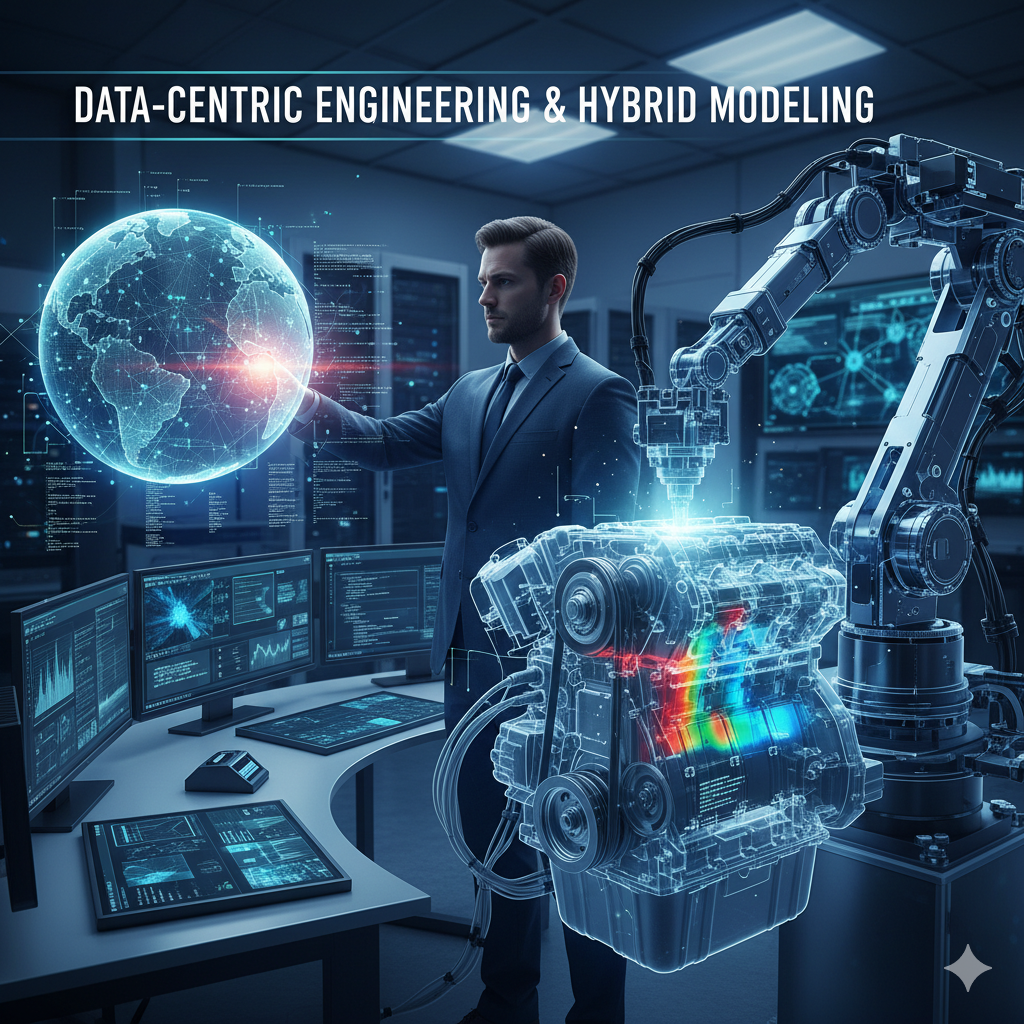🌐 Introduction
Engineering is entering a new phase. Engineers used to depend on theories, experiments, and physical prototypes. Now, data forms the new base of engineering. This has led to the rise of Data-Centric Engineering (DCE). When paired with Hybrid Modeling, it paves the way for clever, quick, and dependable solutions across industries.
📊 What is Data-Centric Engineering?
Data-Centric Engineering means basing engineering choices on data. Instead of just testing physical models, engineers now use:
- Data from sensors and IoT devices
- Simulations that mimic real-world conditions
- Digital twins that stand for physical objects in the virtual world
👉 Simple Example: Car makers test vehicle safety with crash data and simulations rather than wrecking hundreds of actual cars. This saves them money and time.
⚡ What is Hybrid Modeling?
Hybrid Modeling combines two approaches:
- Physics-based models → built on natural laws such as gravity, heat transfer, and fluid flow.
- Data-driven models → built using AI, machine learning, and real-world data.
When these two join forces, engineers get models that are both precise and useful.
👉 Simple Example: In power grids, physics explains power flow, while AI predicts electricity use. Together, they maintain grid stability and efficiency.
💡 Why Does It Matter?
Hybrid Modeling and Data-Centric Engineering have an impact on industries for these reasons:
- They Boost Accuracy → Physics models stick to natural laws, while AI adds insights from the real world.
- They Cut Time & Costs → Testing means fewer prototypes are needed.
- They Spot Failures Early → Machines can alert engineers to issues before they crop up.
- They Help Sustainability → Designs that are smarter use less energy and create less waste.
🛠️ Real-Life Applications
✈️ Aerospace
Airlines and manufacturers use digital twins of aircraft to enhance safety and maintenance.
🏥 Healthcare
Hybrid models help to create personalized medical treatments and smarter medical devices.
🏭 Manufacturing
Factories now use IoT sensors and predictive analytics to spot machine problems before they break down.
🌆 Smart Cities
Traffic systems combine AI with physics models to manage signals cut down on traffic jams, and save energy.
🚀 The Future of Engineering
Tomorrow’s engineers will double as data scientists. The mix of data-focused design and hybrid modeling will drive:
- Self-driving cars
- Clean energy systems
- High-tech factories
- Missions to space
Businesses that embrace these tools now will be at the forefront of new ideas better productivity, and eco-friendly practices.
